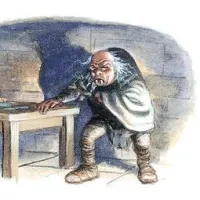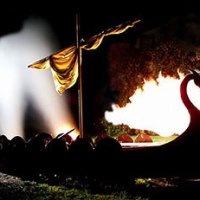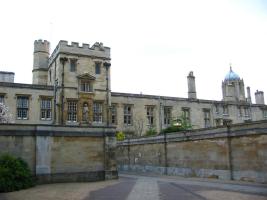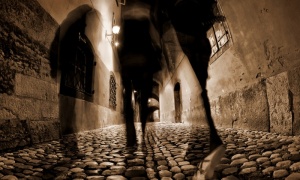Here’s a special pre-Halloween treat for all of you – a post about Utrecht, the most haunted city in the Netherlands! Founded by the Romans in 47 AD, Utrecht was one of the first places in the Netherlands to embrace Christianity, and in the Middle Ages it grew into an important religious centre. The city retains many of its medieval churches and monasteries – wandering the backstreets it is possible to revel in the architectural reminders of past centuries. But there is also a darker aspect to this history. During the horrific witch hunts of the 16th century, thousands of women all over the country were executed – burned, drowned or otherwise tortured to death – on suspicion of witchcraft. Weighing was one of the more common methods of determining witchery, as a popular belief held that any woman who was too light for the size of her frame was obviously a witch (because hags like that have no soul). The nearby town of Oudewater emerged with some honour – no one was ever proved to be a witch here and this is held up as a symbol of the honesty of the locals, who refused to take bribes to rig the weights. It is also seen as the first stirrings of people power and a turn against the church, which was behind the witch-hunts.
Jersey Ghosts
21 Jan
Eerie goings on abound on the island of Jersey. Despite being the largest of the Channel Island archipelago and having a slew of interesting and creepy tales its legends don’t seem to be written about as much as other places in the British Isles, which is a shame given that it is just as rich in myth and superstition as anywhere on mainland Britain. Aside from the more well-known stories that follow, a great deal of personal experiences are also reported by ordinary island folk: from strange lights to full-blown apparitions. Certainly, folklore and tales of the supernatural have always been integral to this island and the yarns that emanate from here range widely, featuring everything from fairies and witches to ghosts and giants. Most famously, on the north coast of Jersey tales used to spread of the Black Dog of Bouley Bay, a terrifying beast with huge teeth and eyes the size of saucers that roamed the coastline. The tales were probably invented by smugglers hoping to scare away parishioners from the coast while they landed their cargoes of brandy and tobacco but there are plenty of other tall tales told throughout the Channel Islands – of cursed wreckers, devil’s footprints, ghostly children and wailing grey ladies.
Canterbury Tales
13 Nov
One of England’s most venerable cities, Canterbury offers a rich slice through two thousand years of history, with Roman and early Christian ruins, a Norman castle, and a famous cathedral that dominates a medieval warren of time-skewed Tudor dwellings. The city began as a Belgic settlement that was overrun by the Romans and renamed Durovernum, from where they proceeded to establish a garrison, supply base and system of roads that was to reach as far as the Scottish borders. With the Roman empire’s collapse came the Saxons, who renamed the town Cantwarabyrig; it was a Saxon king, Ethelbert, who in 597 welcomed Augustine, dispatched by the pope to convert the British Isles to Christianity. By the time of his death, Augustine had founded two Benedictine monasteries, one of which – Christ Church, raised on the site of the Roman basilica – was to become the first cathedral in England. Canterbury, like any other city with such rich history, has its fair share of spooky ghost stories, including the Girl in Grey in St Margaret’s Street, the mysterious figure in white at the Marlowe Theatre, and the Robed Man of Sudbury Tower.
Midwinter Ghosts
15 DecThere is something about the festive season that irresistibly brings ghosts to mind. Who can tell whether it is the wintery chill, the creeping mist or the inscrutable blanket of snow, but the period approaching Christmas seems inextricably bound with the supernatural. A traditional time for tales of unquiet spirits and the restless dead, the Yuletide season has inspired writers from Charles Dickens to M R James to write ghost stories either during or expressly set at Christmas. But is there perhaps more to this? Are these fictional ghostly tales actually based on real-life paranormal occurrences? There is no shortage of material to support such a conclusion – in Britain alone, there are spooky stories of things that go bump in the night each Christmas that span the length and breadth of the country. From spirits that roam the bleak North York Moors, to haunted houses in the garden of England, from ghastly deeds in the cobbled streets of old London town to dark legends of the highlands of Scotland, almost every region has its own chilling seasonal tales to recount. So, whilst everyone else is buying presents and preparing for Christmas parties, spare a thought for the more sinister side of the festive period and its very own Midwinter ghosts.
Edinburgh: Dark Deeds in the Old Town
15 AugWith the Edinburgh Festival upon us again, I thought now would be the perfect time for a reblog of one of my Scottish-themed posts from last year…
I’ve always found Edinburgh a splendidly atmospheric city, which is why I’ve visited it time and again over the years. The city is perched on a series of extinct (we hope) volcanoes and rocky crags – a setting so striking that Sir Walter Scott was moved to call it “My own Romantic Town”. In my opinion, however, it was another native author, Robert Louis Stevenson, who perhaps best captured the feel of this city with the following description in Edinburgh: Picturesque Notes: “You go under arches and down dark stairs and alleys. The way is so narrow that you can lay a hand on either wall; so steep that, in greasy winter weather, the pavement is almost as treacherous as ice.”
View original post 509 more words
Land of the Prince Bishops
12 AugFor England’s northeastern region – in particular the counties of Northumberland and Durham – the centuries between the Roman invasion and the 1603 union of England and Scotland were a period of almost incessant turbulence. To mark the kingdom’s limit and to contain the troublesome tribes of the far north, a series of formidable coastal fortresses was built, most impressively those at Bamburgh, Alnwick, Wakworth and Durham. For arrivals to Durham, the view from the train station is one of the finest in northern England – a panoramic prospect of Durham Cathedral, its towers dominating the skyline from the top of a steep sandstone bluff within a narrow bend of the River Wear. This dramatic site has been the resting place of Saint Cuthbert since 995, when his body was moved here from nearby Chester-le-Street, over one hundred years after his fellow monks had fled from Lindisfarne in fear of the Vikings, carrying his coffin before them. Cuthbert’s hallowed remains made Durham a place of pilgrimage for both the Saxons and the Normans, who began work on the present cathedral at the end of the 11th century. In the meantime, William the Conqueror, aware of the defensive possibilities of the site, had built a castle that was to be the precursor of ever more elaborate fortifications. Subsequently, the bishops of Durham were granted extensive powers to control the troublesome northern marches of the kingdom, ruling as semi-independent Prince Bishops, with their own army, mint and courts of law. When they ceded their powers to the Crown in 1836, following a long period of decline, they also abandoned Durham Castle and transferred their old home to the fledgling University of Durham, England’s third oldest seat of learning after Oxford and Cambridge. Unsurprisingly for a place with such a long and storied history, Durham is said to be the home of a number of ghostly residents and eerie legends.
Royal Ghosts & Hauntings
10 Jun
With the Jubilee not long past I thought that this would be the ideal time to look at the long and storied history of Britain’s royal ghosts and hauntings. The most difficult part is knowing where to begin – one thing that this country does not have is a shortage of tales of blue-blooded phantoms and faders. There is the ghostly lantern-carrying groom of Althorp in Northamptonshire, the spectral limping priest of Amersham, the blood-curdling screams of Edward II in Berkeley Castle, the decapitated head of Charles I seen floating around Billingham Manor, the various phantom coaches of Norfolk, the duelling knights with fiery swords at Blofield, the disguised queen at Borthwick Castle and the crazed laughter of Queen Isabella at Castle Rising. Royal ghosts haunt the New Forest, Hampton Court Palace and St James’s Park. Windsor Castle, one of the main royal residences, is also one of the most haunted. It somehow seems fitting that a royal line with a history as long, colourful and often lurid as that of the British Isles should boast so many ghost stories. But is there a deeper, darker reason for the prevalence of malevolent spirits in relation to the British Crown?
Ghosts of Prague
25 Mar
Prague, the city on the Vlatava river, is not only one of Europe’s most beautiful capitals, it is also one of its most haunted. This bustling, cosmopolitan Czech city is sited amid the tranquil Bohemian countryside, which is home to dozens of brooding castles and historic towns, whose appearance has remained virtually unchanged for hundreds of years. It is hardly surprising that a place with so many layers of history, that has seen battles, murders, executions and assassinations aplenty, as well as many of the key moments in the story of Europe, should also boast more than its fair share of ghosts. In the late Middle Ages, during the reign of the Holy Roman Emperors, Prague’s position as the crossroads of Europe aided its growth into a magnificent city (at that time far larger and more important than Paris or London). In the 16th century the Austrian Habsburgs took over and built many of the Baroque palaces and gardens that delight visitors today, few of whom suspect the many secrets and supernatural mysteries that lie beneath the glossy veneer. Whether you are a believer, a sceptic, interested in the unexplained or simply looking for a good old-fashioned scare, learning more about the dark side of Prague is a fascinating process. The narrow lanes, cobbled alleys, ancient churches and historic monuments of Prague are brimming over with tales of alchemists, murderers, executioners, and the many unfortunate souls who once lived there. Some of them are said to linger in these places, and who knows, perhaps they can still be seen today…


















